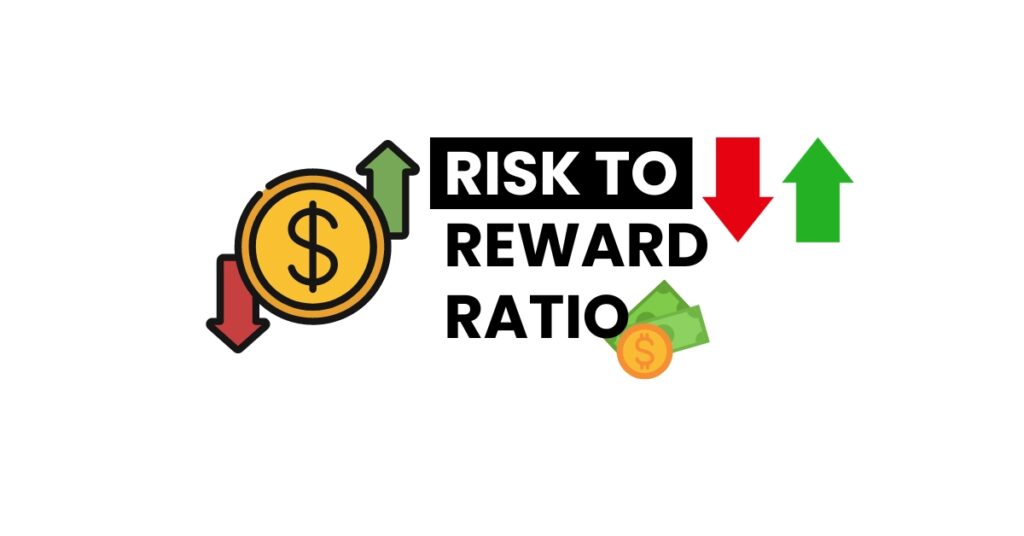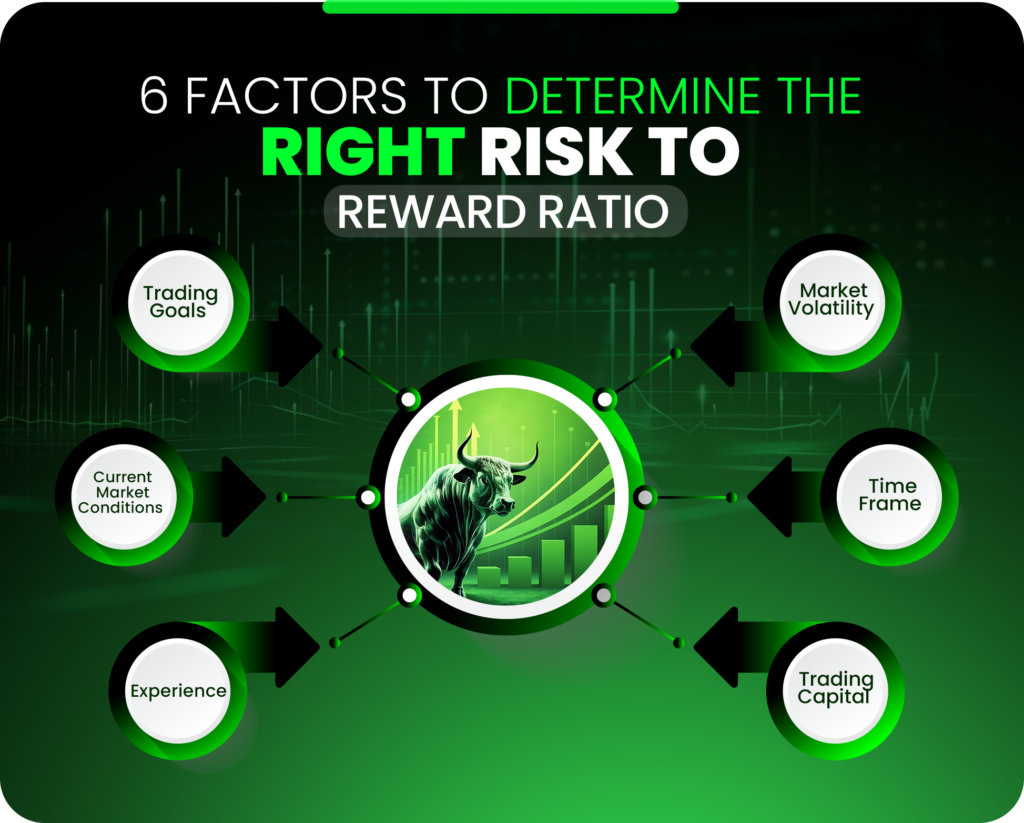The Power of Risk-Reward: How to Achieve Consistent Forex Profits
Are you trading in the financial market without an ideal risk to reward ratio? If yes, then stop and learn the indept concept of risk & reward with examples.
Risk and reward are the two most crucial elements, and the whole trading process is based on them. Every trader’s main aim is to make maximum money with minimum risk.
Knowledge of the risk-to-reward ratio is a must. But don’t worry. We will have a detailed study on how to implement risk and reward management in your trading journey.
Learning the best risk to reward ratio forex is crucial for long-term success in the forex market. The calculation of the risk associated with each forex trade and the establishment of proper stop loss order levels are key components of effective risk management. A healthy risk-to-reward ratio strikes a balance between the potential for profit (for example, 100 pip) and the possibility of loss (for example, 50 pip). This method helps traders maximize winning transactions while reducing losses. Different trading tactics may involve larger risk for greater possible return, but it is vital to carefully analyse the currency pair being traded. The establishment of profit targets and the determination of distinct exit points are two essential components of a successful trading plan. Managing risk is essential to protect your trading account and achieve consistent profitability. Understanding risk to reward ratio is more important than focusing on the stock price in the FX market.

What is Risk?
Risk is the chance or probability of failure that a person takes to achieve the desired goals. It can occur due to any unfavorable or unpredictable event.
Risk is a common scenario; almost every task or activity involves some risk. For example, a farmer harvests crops even after knowing that excessive rain can destroy all the yields.
What is Reward?
A Reward can be defined as a price or positive outcome resulting from hard work, effort, and investment.
For example, a farmer invests his time, money, and resources, and when crops are harvested, he receives a good return by selling them.
A quick glance
Risk is the chance or probability of failure that a person takes to achieve the desired goals. It can occur due to any unfavorable or unpredictable event.
A Reward can be defined as a prize or positive outcome resulting from hard work, effort, and investment.
A risk-to-reward ratio is a mathematical concept that calculates the amount of risk a person can bear to earn the desired return.
- Risk to Reward Ratio Formula = Risk Capacity/ Target Profit
A risk-to-reward ratio of 1:3 is considered ideal in the trading world. However, every trader is different, and their requirement is also different, so they can choose accordingly.
Understanding the concept of Risk & Reward in Trading
The trading and investment world is about profit (reward) and loss (risk). A person entering the financial market knows that trading involves risk and reward. He can earn or lose a significant amount of money in the market.
However, knowing the risk and managing the risk are different things. A true trader knows how to make a good return with limited risk. And that’s what risk management is about. The risk-to-reward ratio is an essential component of risk management.
A risk-to-reward ratio is a mathematical concept that calculates the amount of risk a person can bear to earn the desired return. In simple words, it is the ratio of how much a person can afford to lose to earn the expected profit.
The risk-to-reward ratio is widely applicable in the financial markets. It is used to invest and trade in cryptocurrencies, forex, commodities, stocks, indices, etc.
How risk to reward works
Implementing the concept of risk-to-reward in your trading journey is a must to survive in the complex market. The concept of risk and reward is quite simple; however, even people with years of experience in the market have trouble integrating it. But do not worry; here is a risk-to-reward ratio example to help you understand.
Suppose a stock trader opens a trade worth 100 USD with the aim of making a profit of 20 USD, and he can afford a loss of 10 USD in the transaction.
Risk to Reward Ratio Formula = Target Profit/ Risk Capacity
= 20/10
= 2/1
Let us look at the risk-to-reward ratio forex trading example for a better understanding. Here are the criteria for trade:
Currency Pair: EUR/USD
Position = Long
Entry Price: 1.2000
Take Profit: 1.2200
Stop Loss: 1.1950
Lot Size: 0.10 of Std Lot (a micro lot)
Quantity: 10,000 units (100,000 * 0.1)
Expected Profit = 10,000(1.2200 – 1.2000)
= 200 USD
Loss Capacity = 10,000(1.2000-1.1950)
= 50 USD
Risk to Reward ratio = Target Profit/ Risk Capacity
= 200/50
= 4:1
Hope you understand the concept of risk-to-reward calculation. Here is a table showing different risk-to-reward ratios, win rates, and profit and loss. This will help you choose your ideal risk-to-reward ratio accordingly.
Suppose you want to earn a profit of 500 USD now here is how much you need to risk to earn 500 USD with different risk to reward ratios.
| Risk to Reward ratio | Winrate required / Breakeven point | Profit | Loss |
| 1:1 | 50% | 500 USD | 500 USD |
| 1:2 | 33% | 500 USD | 250 USD |
| 1:3 | 25% | 500 USD | 166 USD |
| 1:4 | 20% | 500 USD | 125 USD |
| 1:5 | 17% | 500 USD | 100 USD |
In the trading world, a risk-to-reward ratio of 1:3 is considered the ideal ratio. However, every trader is different, and their requirement is also different; some professional and aggressive traders also go for high-risk ratios like 1:1 and 1:2 while new traders go for 1:5 and 1:4 ratios.
Why Risk-to-Reward Ratio is important?

You may wonder why there is so much hype about the risk-to-reward ratio in trading. Let’s examine two traders as examples to find out.
Suppose there are two traders, X and Y. Both have a capital of 10,000 USD and place ten trades of 1000 each. The only difference is the risk-to-reward ratio. X’s is 1:1, while Y’s is 1:3.
X
Capital: 10,000
Trade: 10
Entry Price: 1000
Take Profit: 1150
Stop Loss: 850
R/R: 1:1
Y
Capital: 10,000
Trade: 10
Entry Price: 1000
Take Profit: 1150
Stop Loss: 950
R/R: 1:3
In this case, suppose out of the ten trades, six trades hit stop loss, and four hits take profit for both X and Y.
X’s overall Profit or Loss = Overall Profit – Overall Loss
= 150*4-150*6
= 600-900
= -300
Y’s overall Profit or Loss = Overall Profit – Overall Loss
= 150*4-50*6
= 600-300
= 300
In the above example, we see that both X and Y have the same capital and place the same number of trades. The number of losing and winning trades is also the same.
The only thing that is difference is the risk and reward ratio. It changed the whole game for both of them. Due to this X made a loss of 300 USD and Y made a loss of 300 USD.
Wrapping Up
Integrating a risk-to-reward ratio into your trading st is not a choice but a necessity to consistently make a profit. However, even using a risk-and-reward strategy requires proper planning.
An ideal risk-reward ratio varies according to the trading instrument, current market conditions, technical analysis aspects, volatility, time frame, capital, experience, objectives, and many other factors.
So, organize proper research before selecting the right ratio. Also, test your risk-to-reward in demo trades first. If you are satisfied with its efficiency, then you can integrate it into real trades.
